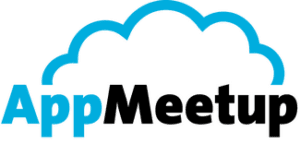| Topic | Summary |
| 5 Stages of a Sales Pipeline | Understanding and effectively managing each stage of the sales pipeline, from lead generation to post-sale follow-up, is crucial for optimizing the sales process and driving revenue. |
| Tools for Pipeline Management | Leveraging tools like Pipedrive CRM can streamline sales pipeline management, improve efficiency, and enhance visibility into sales activities. |
| Mastering Sales Pipeline Management: Essential Best Practices | Implementing best practices such as regularly updating the pipeline, using data to drive decisions, and training the sales team can significantly improve sales performance and conversion rates. |

Tired of watching potential deals slip through the cracks? B2B SaaS and IT services companies need a system to track their sales process, from initial contact to closing. The sales pipeline is that system, providing a visual roadmap for consistent revenue growth.
Understanding the 5 Stages of a Sales Pipeline
It’s not a one-size-fits-all approach. Sales cycles can vary depending on your company type (startup vs. established) and marketing presence (strong inbound vs. reliant on outbound). The first step isn’t lead generation, but rather defining your Ideal Customer Profile (ICP). Once you know exactly who your perfect customer is, you can tailor lead generation strategies to attract them.
BANT is Old School, But Here’s What’s New
While BANT (Budget, Authority, Need, Timeline) can be a helpful starting point, modern lead qualification goes beyond these basic criteria. Today, sales teams leverage data points like website behavior, engagement level, and firmographics (company size, industry) to assess fit.
Users Do Their Research (Especially for Lower-Priced Products)
Keep in mind that for lower-priced SaaS products, potential customers might conduct extensive online research before reaching out to sales. This means your content marketing and website need to be informative and address common pain points effectively.
Regardless, a well-structured pipeline helps track prospects, streamline the process, and forecast success:
1. Connect: Personalized Initial Contact
This first stage involves pinpointing potential customers. Common methods include:
- Inbound Marketing: Blog posts, social media, webinars
- Outbound Marketing: Email outreach, cold calling
- Referrals and Networking
Effective lead generation requires a multi-channel strategy. Here’s how to get started:
- Develop a Content Marketing Plan: Attract leads with valuable content (blog posts, social media updates, webinars).
- Launch an Outbound Campaign: Reach out directly with targeted email outreach and cold calling.
2. Lead Qualification: Targeting Your Ideal Clients
Not all leads are created equal. Qualification involves assessing if a lead fits your ideal client profile (ICP) and has the potential to convert. BANT (Budget, Authority, Need, and Timeline) is a traditional approach, but user research is increasingly important. Today, informed users might bypass sales altogether for low-cost solutions.
- Develop a Lead Scoring System: Assign points based on factors like company size, industry, job title, and engagement level. This helps prioritize leads with higher conversion potential.
3. Discovery: Addressing Specific Needs
The goal here is to ask probing questions that uncover the prospects problem, urgency to solve it, and who the decision makers are.
- Create a Structured Framework of Questions: Address the key areas you need to explore. Framework should include: pain points, goals and objectives, value proposition, and decision-making process.
4. Proposal: Addressing Specific Needs
Based on the contact, tailor a proposal that addresses the lead’s specific needs and demonstrates how your solution solves their problems. Include case studies, testimonials, and detailed pricing information to build credibility.
- Develop a Customizable Proposal Template: Ensure consistency and streamline the process with a template that includes sections for client needs, solutions, pricing, and next steps.
5. Post-Sale: Building Customer Loyalty
Closing the deal is just the beginning. Following up ensures satisfaction, addresses any issues, and identifies upselling and cross-selling opportunities. Strong customer relationships lead to long-term loyalty and referrals.
- Implement a Post-Sale Follow-Up Process: Schedule regular check-ins with new customers to gather feedback and address concerns. Use this opportunity to introduce additional products or services that may benefit them. Pro Tip: Schedule annual reviews with established clients for product and service feedback.
Key Sales Pipeline Metrics
Pipeline Velocity and How to Measure It
Pipeline velocity measures how quickly leads move through your sales pipeline. It’s calculated by multiplying the number of opportunities by the average deal size and win rate, then dividing by the length of your sales cycle.
Importance of Monitoring Pipeline Velocity:
- Helps predict future revenue.
- Identifies bottlenecks in your sales process.
- Enables sales leaders to make informed decisions about resource allocation.
Conversion Rate and How to Improve It
Conversion rate measures the percentage of leads that move from one stage of the pipeline to the next. It’s a critical metric for identifying strengths and weaknesses in your sales process.
Improving Conversion Rates:
- Train Your Sales Team: For self-paced sales training, the Mavericks Learning Library offers realistic action items that sales teams can apply immediately to improve their handling of objections and closing techniques. This resource is designed to help sales professionals enhance their skills on demand.
- Collaboration with Marketing: Work closely with your marketing team to ensure that your sales messaging is cohesive and aligned with your broader marketing campaigns. This collaboration helps in creating consistent messaging across all customer touchpoints, increasing the likelihood of conversions.
- Data Analysis for Conversion Improvement:
- Lead Source Analysis: Review which sources of leads are converting at the highest rates. Understanding this, you can prioritize efforts towards the most effective lead-generation channels.
- Stage Transition Rates: Examine the rate at which leads move from one pipeline stage to the next. Identify any stages where conversion drops significantly and investigate potential causes, such as messaging inconsistencies or delays in follow-up.
Average Deal Size
The average deal size is a metric that reflects the typical revenue generated per sale. Increasing the average deal size can significantly impact overall revenue.
Strategies for Increasing Deal Size:
- Upsell additional features or services.
- Bundle products or services to provide more value at a higher price point.
- Offer tiered pricing to encourage customers to choose higher-value options.
Tools for Managing Sales Pipelines
Effective management of a sales pipeline requires the right tools. Here are four CRMs that can help:
Pipedrive CRM ($ – Affordable) | AppMeetup Recommended
Best for: Small to medium-sized businesses or sales teams that need a user-friendly CRM with strong pipeline management features and straightforward automation. Pipedrive is ideal for those looking to enhance efficiency without overwhelming complexity or a high price tag. A great user experience because Pipedrive was created by salespeople for salespeople.
HubSpot ($$ – Investment)
Best for: Growing companies or businesses that need an all-in-one CRM solution with advanced marketing, sales, and customer service tools. HubSpot is particularly valuable for those who require seamless integration between their sales and marketing efforts.
Microsoft Dynamics ($$$ – Investment)
Best for: A versatile CRM platform with a wide range of features and integrations. Novice users may find this complex to navigate. However, many find t he training investment worthwhile, as Dynamics seamlessly integrates with Microsoft Office 365.
Salesforce ($$$$ – Investment)

Mastering Sales Pipeline Management: Essential Best Practices
Here’s how to get the most out of your sales pipeline, consider these best practices:
- Regularly Update Your Pipeline: Keep your pipeline up to date by regularly adding new leads, updating the status of existing leads, and removing dead leads.
- Use Data to Drive Decisions: Leverage data and analytics to make informed decisions about your sales strategy. This can help you identify bottlenecks and areas for improvement.
- Train Your Sales Team: Ensure your sales team is well-trained in how to use your CRM tool and follow your sales process. Regular training sessions can help improve their efficiency and effectiveness. Consider incorporating resources like the Mercury Learning Library from AppMeetup.com to enhance their sales skills.
Keep in mind…
A well-managed sales pipeline is crucial for the success of B2B SaaS sales leaders. By understanding the stages of a sales pipeline, using the right tools, and following best practices, you’ll quickly improve your sales process and drive more consistent revenue.
Ready to take your sales pipeline to the next level? Sign up for a 14-day free trial of Pipedrive CRM and experience how automation can streamline your sales process and boost your conversion rate




